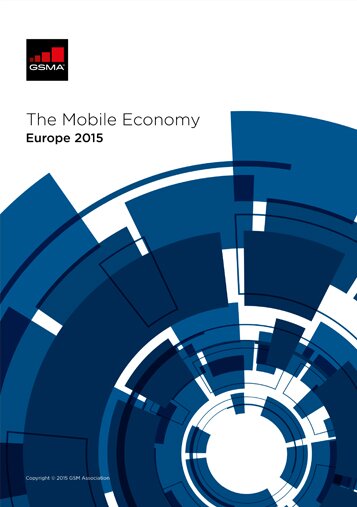Chapter 1
Europe has the highest rate of unique subscriber penetration of any region, with the subscriber base set to reach 450 million by the end of 2020, a penetration rate of 82%. 4G LTE coverage and adoption have continued to expand rapidly across the region, with almost 60% of total connections set to be 4G by 2020. Operator investments in 4G network quality and coverage, and growth in smartphone adoption, continue to drive data usage. Data traffic is helping recurring (service) revenues return to growth at the regional level for the first time this decade, with growth forecast from 2017 at an annual rate of around 1% to 2020. Although there are signs of stabilisation, cashflow margins remain well below their historical averages. This may raise questions over the industry’s ability to finance the next wave of investment around 5G.
Chapter 2
In 2014, mobile technologies and services generated 3% of GDP in Europe, a contribution that amounted to around €500 billion of economic value. The mobile ecosystem also supported 3.8 million jobs in 2014. It makes a substantial contribution to the funding of the public sector, with approximately €84 billion raised in the form of general taxation in 2014. Europe continues to see innovation across all areas of the mobile ecosystem, with a growing number of players and innovative new apps and services. Operators are helping to drive innovation across the ecosystem through a range of investments and partnerships. A key challenge for European developers and internet companies is the lack of scale in national markets compared to the US or emerging markets in Asia such as China and India. This challenge is compounded by the different national regulatory and legal environments, with an overall regulatory environment that is often not supportive of innovations and the launch of new digital products and services.
Chapter 3
The EU Telecoms Framework Review that is under way is an example of how rules can play a pivotal role in determining the degree of connectivity. With a new set of rules that encourages mobile-sector and next-generation broadband investment, there is a real opportunity to realise the potential of the Digital Single Market. Since the last review, there has been widespread innovation across the mobile ecosystem, with new players, services and business models fundamentally altering how people communicate and interact in the digital world. The current review of the framework by the Commission is simply not enough to address the challenges that the industry faces. So much has changed and yet so much is expected of the Digital Single Market that the industry needs a complete rethink of telecoms regulation in Europe. The Telecom Framework Review currently under way means the rethink opportunity is now or never.
